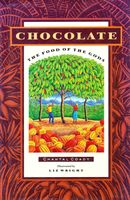Advertisement
A Revolutionary Invention
Appears in
Published 1993
The most important invention relating to chocolate production, mentioned earlier, was the cocoa press invented by the Dutch chemist Coenraad Van Houten and used in England, France and Switzerland. By turning a large wooden screw, it pressed the cocoa butter out of the chocolate liquor. The result was a dry, virtually fat-free cocoa powder. Van Houten was granted a patent for his cocoa butter extracting press by Wilhelm I on 4 April 1828, and so established Holland as the leading chocolate-producing country in Europe. He had also developed a system, which has since been called ‘Dutching’, involving an ancient technique used by the Aztecs: potash was mixed with the cocoa beans in order to darken the colour, lighten the flavour, and create a cocoa powder which dissolves readily in milk or water. The debate about whether ‘Dutching’ improves the flavour of cocoa continues to rage, although at the time of this invention in 1825, the English felt that the cocoa butter was an important factor in the nutritional and health-giving properties of cocoa. However, soon both the Frys and the Cadburys had bought machines from Van Houten, and were selling pure cocoa extract. The new trend was for cocoa extract, and it was marketed for its purity and solubility by Cadbury and Fry.

